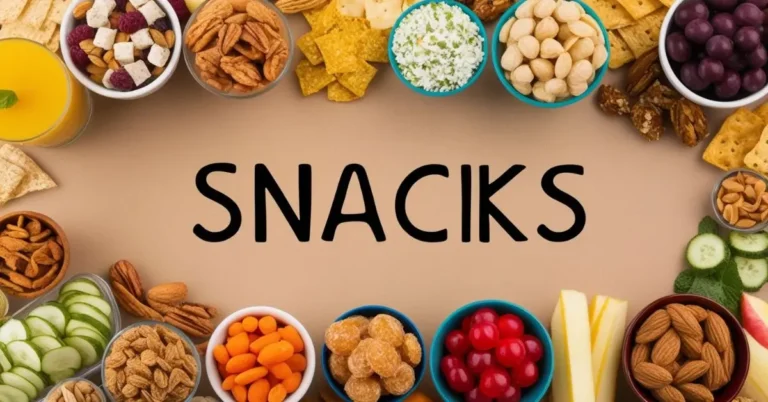Snacks, those delightful morsels of food consumed between meals, have become an integral part of human culture worldwide. From the crunchy to the savory, the sweet to the salty, snacks satisfy cravings, provide energy boosts, and often bring a sense of comfort. But snacks are more than just a quick bite; they are a reflection of cultural heritage, technological advancements in food production, and evolving dietary trends. This article delves deep into the world of snacks, exploring their history, cultural significance, nutritional aspects, and the ever-evolving market dynamics.
The Historical Evolution of Snacks
The concept of snacking is not new; it dates back to ancient civilizations. In prehistoric times, early humans likely snacked on fruits, nuts, and seeds as they foraged. As civilizations developed, so did the variety and complexity of snacks.
In ancient Greece, people enjoyed opson, small dishes of vegetables, fish, or cheese consumed with bread. The Romans, known for their elaborate feasts, also had a variety of snacks, including nuts, fruits, and honey cakes, which were often consumed during their long banquets. Similarly, in ancient China, snacks like baozi (steamed buns) and mantou (steamed bread) were common, especially during festivals.
The Middle Ages saw the rise of street food, which could be considered an early form of modern-day snacks. In bustling medieval cities, vendors sold pastries, meats, and fruits to workers and travelers. These portable foods were easy to consume on the go, making them popular among the masses.
As global trade expanded during the Age of Exploration, new ingredients and snack ideas traveled across continents. The introduction of sugar to Europe, for example, revolutionized the confectionery industry, leading to the creation of candies, cookies, and other sweet treats that became popular snacks.
Cultural Significance of Snacks
Snacks often hold cultural significance, representing the culinary traditions and preferences of different regions. In many cultures, certain snacks are associated with festivals, rituals, or everyday life.
- Asia: In Japan, mochi (rice cakes) are traditionally eaten during the New Year celebration. These chewy cakes, made from glutinous rice, are often filled with sweet or savory fillings. Similarly, in India, samosas and pakoras are popular snacks served during festivals and special occasions. These fried treats, filled with spiced potatoes, vegetables, or meat, reflect India’s rich culinary heritage.
- Europe: In Spain, tapas are small dishes served with drinks, often enjoyed in social settings. These can range from simple olives to elaborate seafood dishes, showcasing the diversity of Spanish cuisine. In the UK, scones served with clotted cream and jam are a quintessential snack, especially during afternoon tea, a tradition that dates back to the 19th century.
- Middle East: The Middle East offers a plethora of snacks, from falafel to baklava. Falafel, made from ground chickpeas or fava beans, is a popular street food often served in pita bread. Baklava, a sweet pastry made of layers of filo dough, nuts, and honey, is a common dessert snack, reflecting the region’s love for sweet and rich flavors.
- Africa: In West Africa, plantain chips are a popular snack, made by slicing and frying ripe or unripe plantains. These crispy, savory chips are enjoyed by people of all ages and are a staple at gatherings and celebrations. In North Africa, harissa spiced olives are a common snack, showcasing the region’s love for bold and spicy flavors.
- Americas: In the United States, the snack culture is diverse, reflecting the melting pot of cultures. From popcorn at movie theaters to nachos at sports events, snacks are an integral part of American life. In Mexico, elote (grilled corn on the cob) topped with chili, lime, and cheese is a popular street snack, while in Brazil, pão de queijo (cheese bread) is a beloved snack enjoyed throughout the day.
The Nutritional Aspect of Snacks
Snacks can range from nutritious to indulgent, and their role in a balanced diet is often debated. Traditionally, snacks were simple, whole foods like fruits, nuts, and vegetables, which provided essential nutrients without excessive calories or additives. However, the modern snack industry has evolved, leading to the creation of highly processed snacks that are often high in sugar, salt, and unhealthy fats.
- Healthy Snacking: In recent years, there has been a growing emphasis on healthy snacking. Nutritionists advocate for snacks that are rich in fiber, protein, and healthy fats, which can help control hunger and provide sustained energy. Examples include nuts, seeds, yogurt, and fresh fruits. These snacks not only satisfy cravings but also contribute to overall health by providing essential vitamins and minerals.
- Indulgent Snacking: On the other hand, indulgent snacks like chips, candies, and pastries are often consumed for pleasure rather than nutrition. These snacks are typically high in calories and low in nutritional value, making them less suitable for regular consumption. However, they play a role in satisfying cravings and can be enjoyed in moderation as part of a balanced diet.
- Functional Snacks: The concept of functional snacks has gained popularity, with products designed to offer specific health benefits. These snacks are often fortified with vitamins, minerals, probiotics, or other beneficial ingredients. For example, protein bars are marketed as a convenient source of protein for athletes, while snacks containing omega-3 fatty acids are promoted for heart health.
The Snack Industry: Market Dynamics and Trends
The snack industry is a booming market, with global sales reaching billions of dollars annually. This growth is driven by several factors, including changing lifestyles, the rise of convenience foods, and the increasing demand for healthier options.
- Convenience and Portability: In today’s fast-paced world, convenience is a key driver of snack consumption. Busy lifestyles and the need for on-the-go options have led to the popularity of portable snacks like granola bars, trail mixes, and packaged fruit slices. These snacks are designed to be easy to carry, store, and consume, making them ideal for people with hectic schedules.
- Health and Wellness: As consumers become more health-conscious, there is a growing demand for snacks that align with dietary preferences and health goals. This has led to the rise of gluten-free, vegan, organic, and non-GMO snacks. Brands are increasingly focusing on clean labels, emphasizing natural ingredients, minimal processing, and the absence of artificial additives.
- Ethical and Sustainable Snacking: Sustainability is another significant trend in the snack industry. Consumers are increasingly concerned about the environmental impact of their food choices, leading to a demand for snacks that are sustainably sourced and packaged. Brands are responding by using eco-friendly packaging, sourcing ingredients from fair-trade suppliers, and reducing their carbon footprint.
- Innovative Flavors and Ingredients: The snack industry is also characterized by constant innovation in flavors and ingredients. Brands are experimenting with exotic spices, unique flavor combinations, and novel ingredients like plant-based proteins and alternative sweeteners. This has led to the creation of snacks that cater to adventurous palates and diverse dietary needs.
- Digitalization and E-commerce: The rise of e-commerce has transformed the snack industry, making it easier for consumers to discover and purchase a wide variety of snacks. Online platforms offer a vast selection of products, from artisanal snacks made by small businesses to global brands. Subscription services, where consumers receive a curated selection of snacks delivered to their doorsteps, have also become popular, offering convenience and variety.
The Future of Snacking
The future of snacking is likely to be shaped by several emerging trends and challenges. As technology advances, the development of new food processing techniques and ingredients will continue to evolve, leading to innovative snack products. Additionally, the growing awareness of health and sustainability will drive the demand for snacks that are not only delicious but also nutritious and eco-friendly.
- Personalized Nutrition: One emerging trend is personalized nutrition, where snacks are tailored to individual dietary needs and preferences. Advances in genetic testing and digital health tools may enable consumers to choose snacks that align with their unique nutritional profiles, optimizing their health and well-being.
- Plant-Based Snacking: The plant-based movement is expected to continue growing, with more snacks made from plant-derived ingredients. This trend is driven by the increasing number of consumers adopting vegetarian, vegan, or flexitarian diets. Plant-based snacks, such as those made from legumes, nuts, seeds, and alternative proteins, offer a sustainable and nutritious option for consumers.
- Globalization of Snack Cultures: As the world becomes more interconnected, there will be greater cross
-cultural exchange in snack preferences. This globalization of snack cultures will lead to the introduction of diverse flavors and ingredients into different markets. For example, snacks like Japanese matcha (green tea) flavored treats or Middle Eastern za’atar seasoned chips may become more common in Western countries. Conversely, Western snacks like potato chips and chocolate bars are likely to continue gaining popularity in Asia and Africa.
- Technological Innovations: The role of technology in the snack industry cannot be overstated. Advances in food science and technology are enabling the creation of snacks that are not only tastier but also healthier and more sustainable. For instance, 3D printing technology is being explored for creating customized snacks with specific shapes, textures, and nutritional content. Similarly, lab-grown ingredients and alternative proteins, such as those derived from insects or algae, may become common in snack production, offering a sustainable alternative to traditional ingredients.
- Mindful Snacking: As consumers become more aware of the impact of their dietary choices on their health and the environment, there is a growing trend towards mindful snacking. This involves choosing snacks that are not only satisfying but also align with one’s health goals, ethical values, and environmental concerns. Mindful snacking may involve eating smaller portions, savoring the flavors, and opting for snacks that are sustainably produced and packaged.
Conclusion
Snack are more than just a quick bite between meals; they are a reflection of cultural traditions, technological advancements, and evolving consumer preferences. From ancient times to the modern era, snacks have played a significant role in human society, providing nourishment, pleasure, and a sense of community. As the snack industry continues to grow and evolve, it is likely to be shaped by emerging trends in health, sustainability, technology, and globalization.
Whether it’s a simple piece of fruit, a bag of chips, or an exotic treat from a distant land, snacks have a unique ability to bring joy and satisfaction to people of all ages and backgrounds. As we move forward, the challenge and opportunity for the snack industry will be to continue innovating while staying true to the core values of quality, taste, and sustainability. In doing so, snacks will remain an integral part of our lives, offering not just a moment of indulgence but also a connection to the broader world of food.

